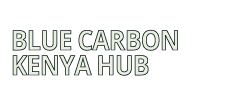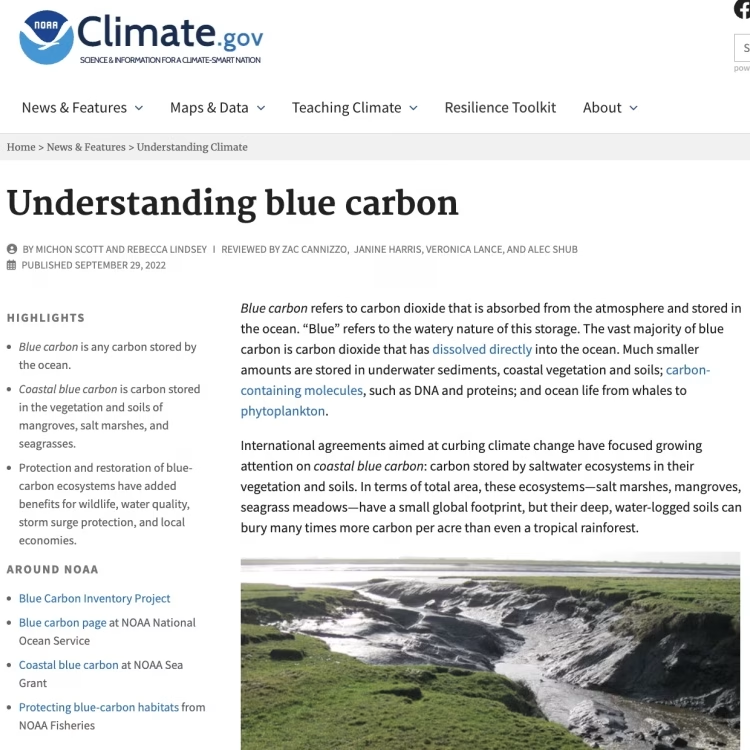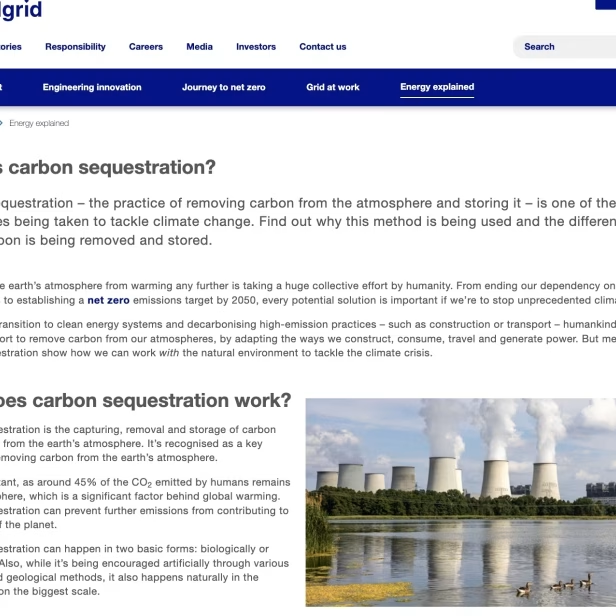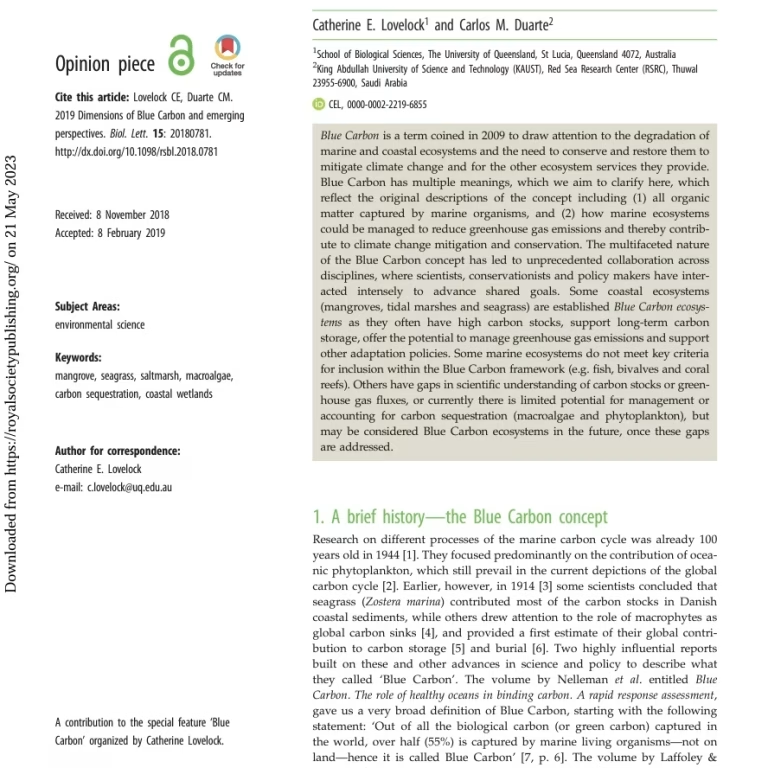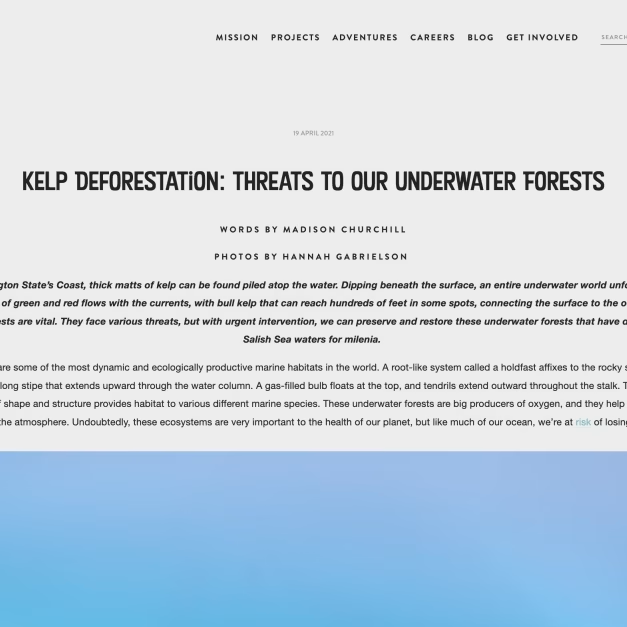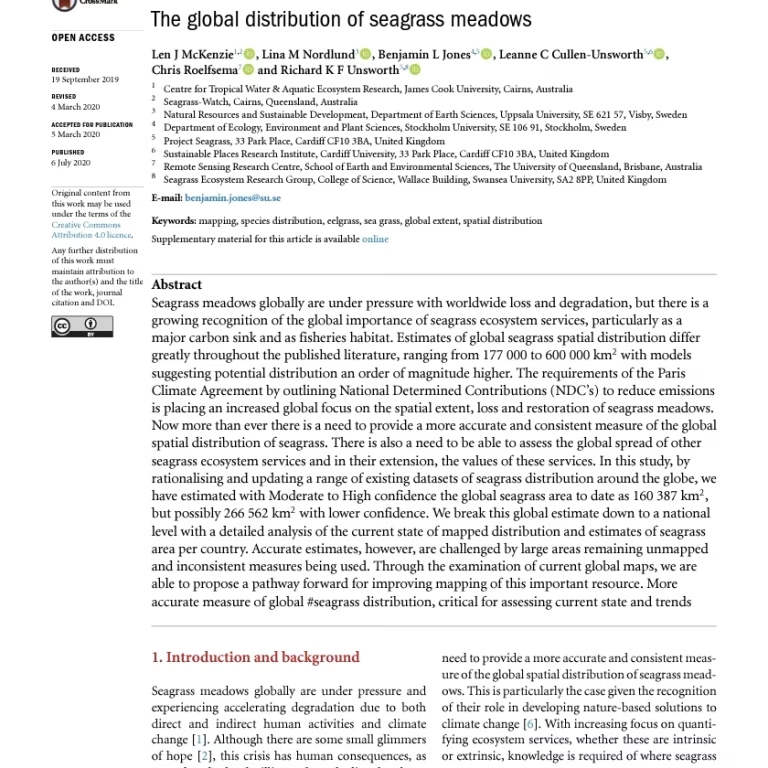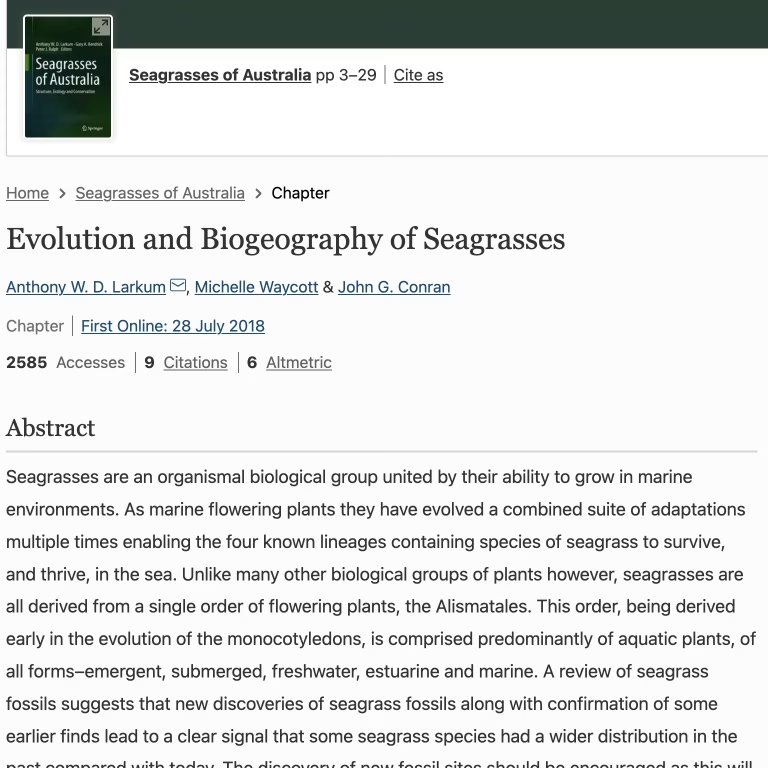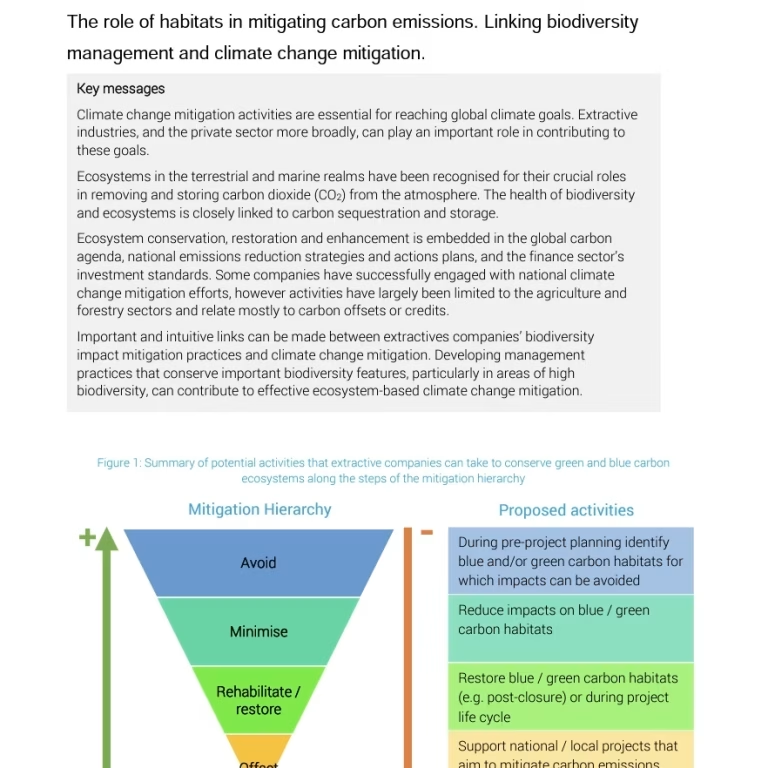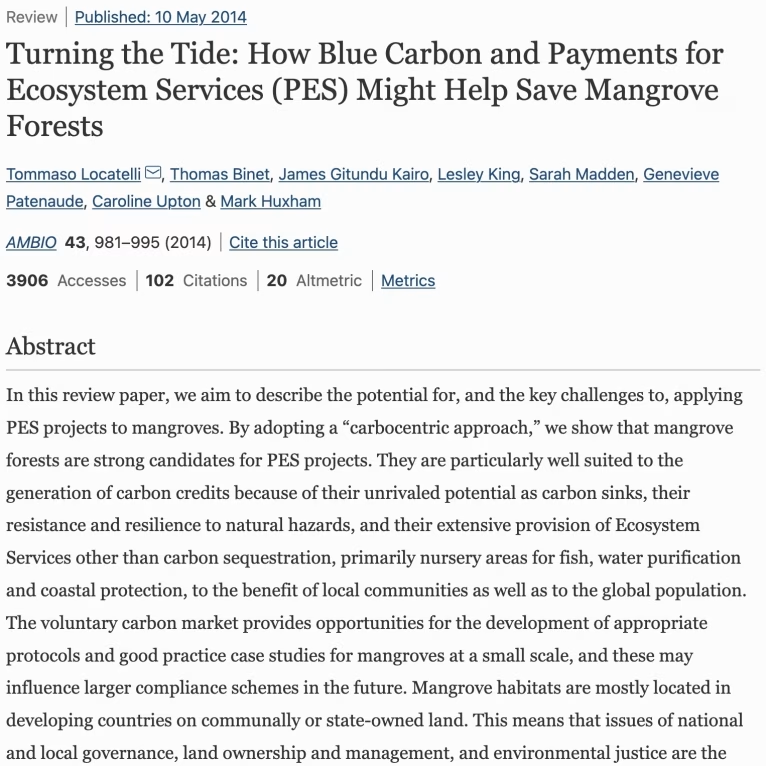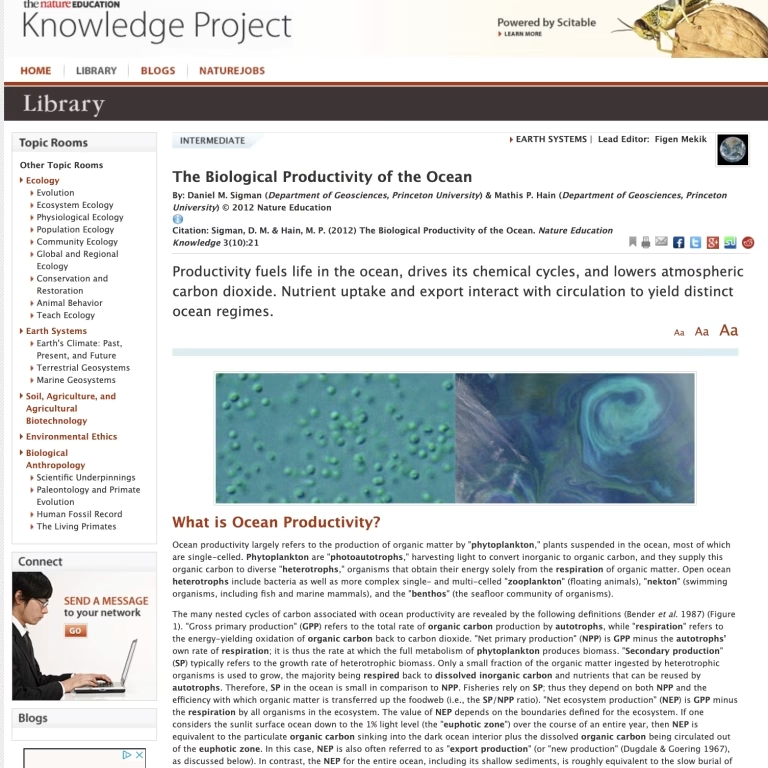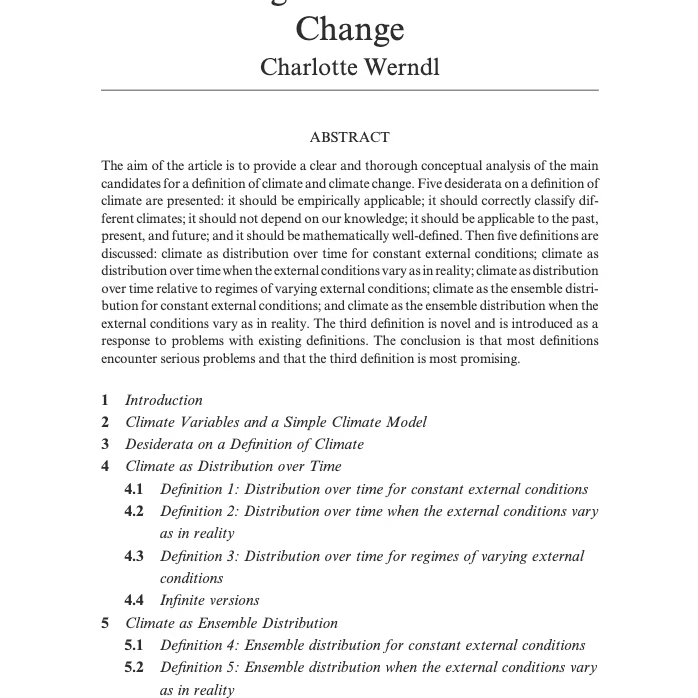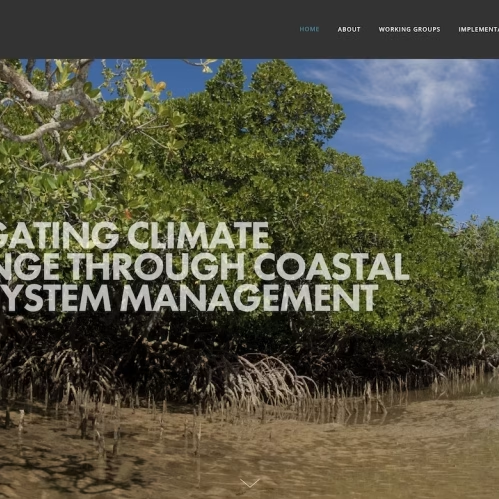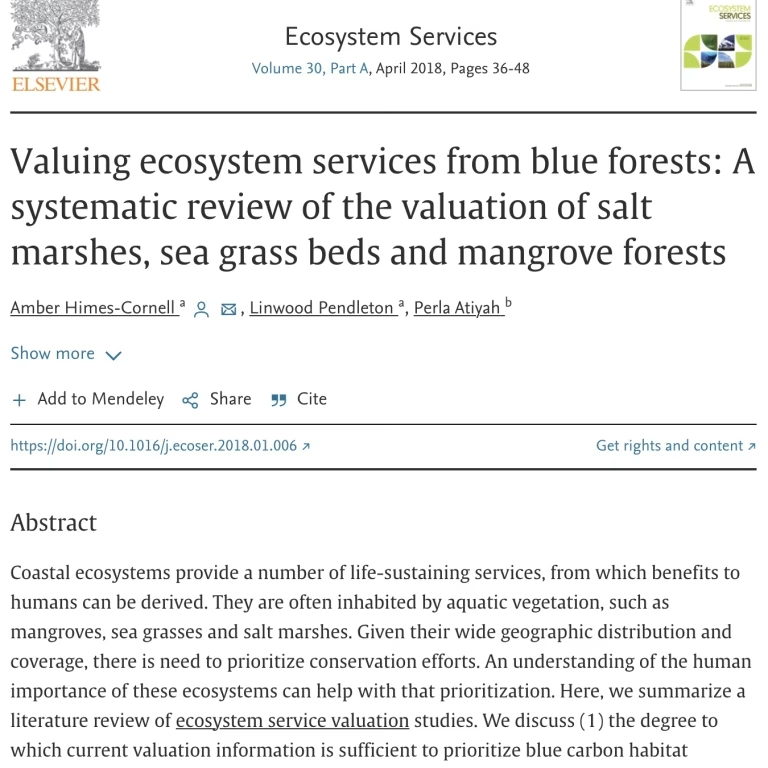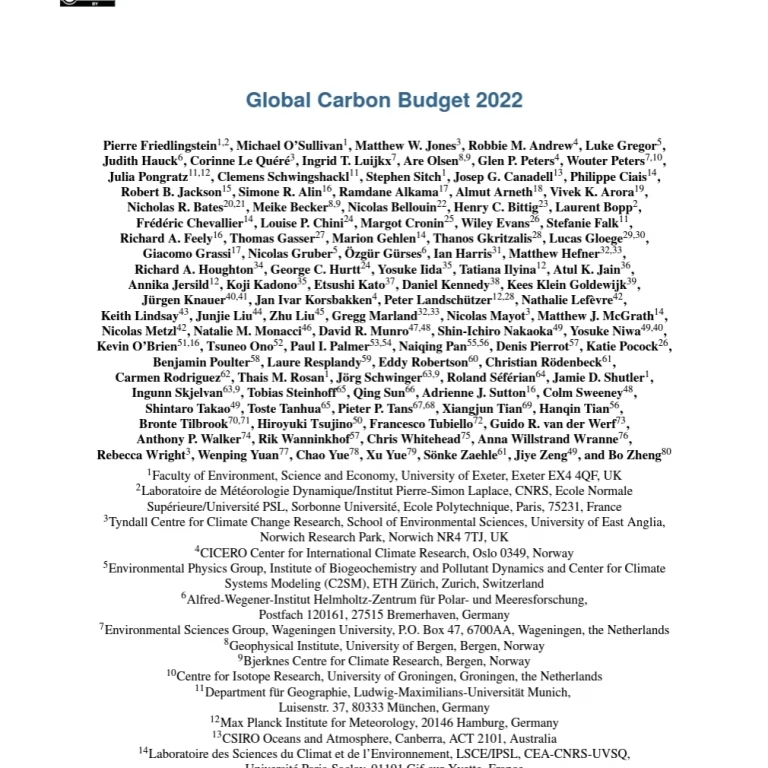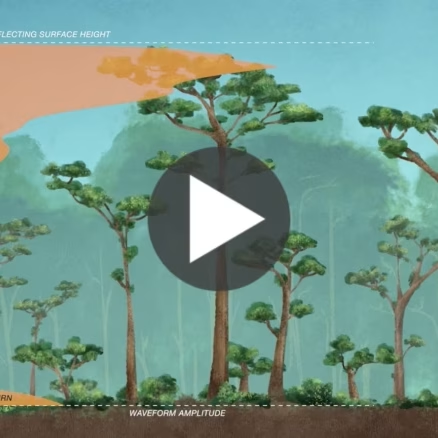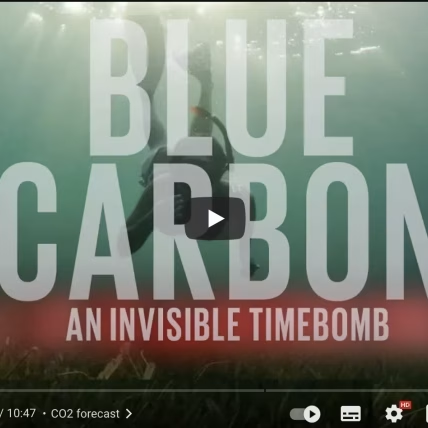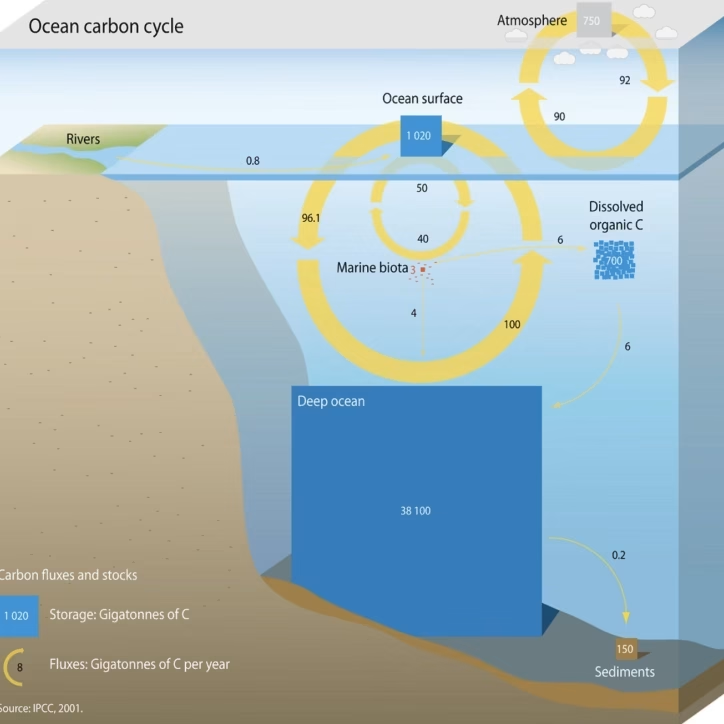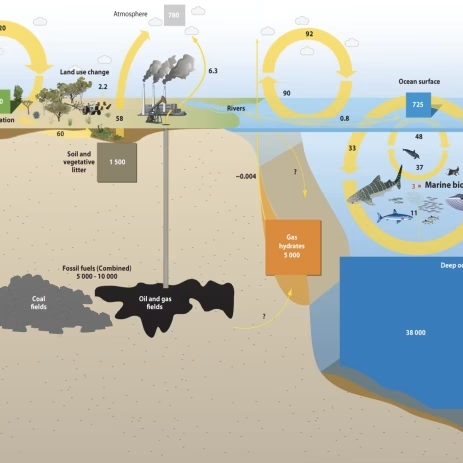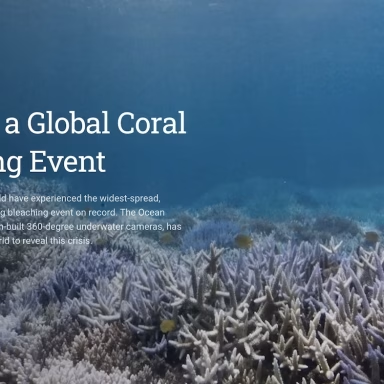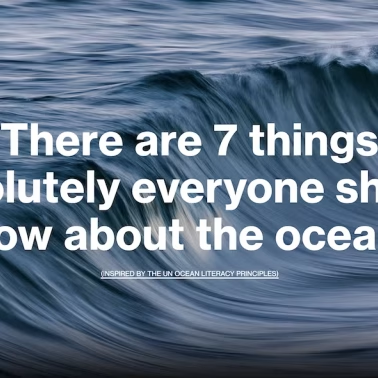Resource Library
- All
- Further Reading
- Infographic
- Map
- Online Article
- Online Exercise
- Photo
- Report
- Scientific Article
- Story Map
- Teaching Material
- Tools
- Video
- Website
Understanding Blue Carbon
Blue carbon refers to carbon dioxide that is absorbed from the atmosphere and stored in the ocean. “Blue” refers to the watery nature of this storage. The vast majority of blue carbon is carbon dioxide that has dissolved directly into the ocean. Much smaller amounts are stored in underwater sediments, coastal vegetation and soils; carbon-containing…
What is Carbon Sequestration?
Carbon sequestration – the practice of removing carbon from the atmosphere and storing it – is one of the many approaches being taken to tackle climate change. Find out why this method is being used and the different ways in which carbon is being removed and stored.
Dimensions of Blue Carbon and Emerging Perspectives
Blue Carbon is a term coined in 2009 to draw attention to the degradation of marine and coastal ecosystems and the need to conserve and restore them to mitigate climate change and for the other ecosystem services they provide. Blue Carbon has multiple meanings, which authors aim to clarify here, which reflect the original descriptions…
Kelp Deforestation: Threats to our Underwater Forests
Kelp forests are some of the most dynamic and ecologically productive marine habitats in the world. A root-like system called a holdfast affixes to the rocky seafloor, supporting a long stipe that extends upward through the water column. A gas-filled bulb floats at the top, and tendrils extend outward throughout the stalk. The complexity of…
The Global Distribution of Seagrass Meadows
Seagrass meadows globally are under pressure with worldwide loss and degradation, but there is a growing recognition of the global importance of seagrass ecosystem services, particularly as a major carbon sink and as fisheries habitat. Estimates of global seagrass spatial distribution differ greatly throughout the published literature, ranging from 177 000 to 600 000 km2…
Evolution and Biogeography of Seagrasses
Seagrasses are an organismal biological group united by their ability to grow in marine environments. As marine flowering plants they have evolved a combined suite of adaptations multiple times enabling the four known lineages containing species of seagrass to survive, and thrive, in the sea. Unlike many other biological groups of plants however, seagrasses are…
Green and Blue Carbon
Ecosystems in the terrestrial and marine realms have been recognised for their crucial roles in removing and storing carbon dioxide (CO2) from the atmosphere. The health of biodiversity and ecosystems is closely linked to carbon sequestration and storage.
Turning the Tide: How Blue Carbon and Payments for Ecosystem Services (PES) Might Help Save Mangrove Forests
In this review paper, the authors aim to describe the potential for, and the key challenges to, applying Payment for Ecosystem (PES) projects to mangroves. By adopting a “carbocentric approach,” the authors show that mangrove forests are strong candidates for PES projects.
The Biological Productivity of the Ocean
Productivity fuels life in the ocean, drives its chemical cycles, and lowers atmospheric carbon dioxide. Nutrient uptake and export interact with circulation to yield distinct ocean regimes.
On Defining Climate and Climate Change
The aim of the article is to provide a clear and thorough conceptual analysis of the maincandidates for a definition of climate and climate change.
The Blue Carbon Initiative
Through this resource, readers can learn more about about blue carbon and how it contributes to mitigating climate change.
Valuing Ecosystem Services from Blue Forests: A systematic review of the valuation of saltmarshes, seagrass beds and mangrove forests
Coastal ecosystems provide a number of life-sustaining services, from which benefits to humans can be derived. They are often inhabited by aquatic vegetation, such as mangroves, sea grasses and salt marshes. Given their wide geographic distribution and coverage, there is need to prioritize conservation efforts. An understanding of the human importance of these ecosystems can…
Deep Sea Fun
What types of marine life can be found in the deep sea? This online exercise comes to you from Neal Agarwal.
The Carbon Cycle – Essential for Life on Earth
Carbon is an essential building block for life. Learning how carbon is converted through slow- and fast-moving cycles helps us understand how this life-sustaining element moves through the environment. Discover how NASA measures carbon through both field work and satellite imagery keeping watch through its eyes on the sky, on Earth, and in space.
Ocean Carbon Dioxide levels. An invisible time bomb?
Ocean Acidification is perhaps the most well-publicised consequence of increased levels of carbon dioxide being absorbed by our oceans. But as the oceans also absorb vast quantities of heat from our human activities, and sea levels rise as a result of melting ice caps and thermal expansion, another less well-known but no less precious store…
The Ocean Carbon Cycle
Without the contribution of oceans and coastal ecosystems to global biological carbon sequestration, today’s CO2 concentration in the atmosphere would be much larger than it is. But the uptake capacity of oceans and coasts is both finite and vulnerable. Minimization of pressures, restoration and sustainable use are management options that can help these ecosystems maintain…
The Carbon Cycle
Carbon is the basis of all organic substances, from fossil fuels to human cells. On Earth, carbon is continually on the move – cycling through living things, the land, ocean, atmosphere. What happens when humans start driving the carbon cycle? We have seen that we can make a serious impact – rapidly raising the level…
Chasing a Global Coral Reef Bleaching Event
Coral reefs around the world have experienced the widest-spread, longest and most damaging bleaching event on record. The Ocean Agency, armed with custom-built 360-degree underwater cameras, raced around the world to reveal this crisis.
Our Incredible Ocean
A visual toolkit to help raise awareness of the fundamental importance of the ocean to life on Earth, and help inspire ocean protection. This resource corresponds with the seven Ocean Literacy Essential Principles
